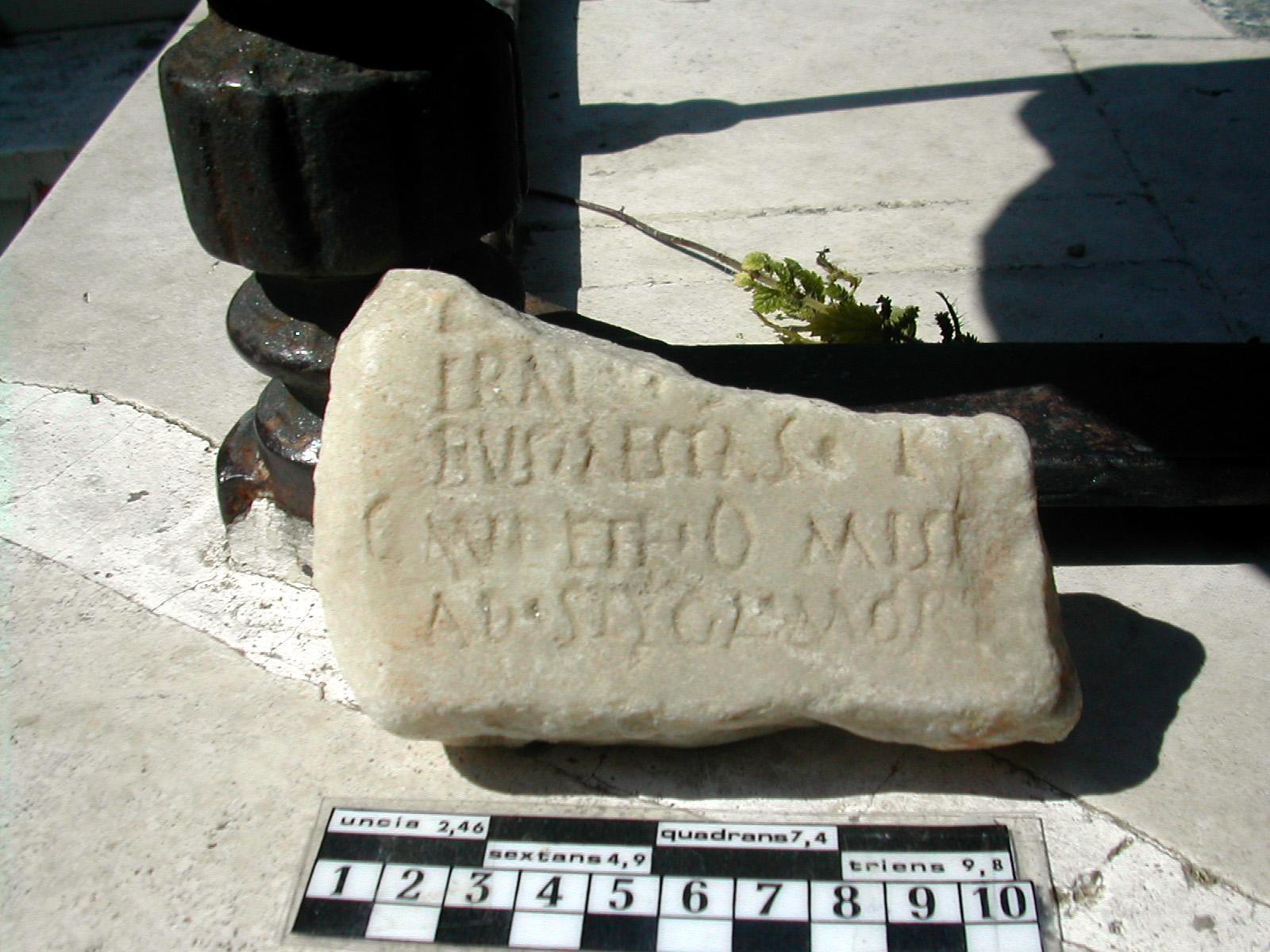Fragmentary Epitaph of Montemayor
Reference CIL II2/5, 506 | Description | Lyrics | Location | Chronology | Epigraphic edition | Translation | Apparatus | Comentary | Type of verse | Text divided into verses and metric signs | Images | Bibliography | Link to DB | Author |
Fragmentary Epitaph of Montemayor
Description
- Idno filename 22/01/0095
- Type of inscription: Sepulcralis
- Material Description: Tablet of white marble
- Conservation status: Broken off on the right side and above, with loss of text in both cases.
- Dimensions height/width/depth (cm): 6.5/11/3
-
Epigraphic field:
- Layout: "Ordinatio" not very good. Rounded interpunction, missing after the interjection o in l. 4.
Lyrics
- Font:Libraria
- Letter size:0,8 cm
- Description of the letters:<G> carved outside the margin and the writing box in l. 4.
Location
- Place of discovery: Found in 1988 in Montemayor, Córdoba
- Geolocation
- Conservation location: Montemayor, Córdoba, in the Museo de Ulia.
- Location with Modern Nomenclature España / Córdoba / Montemayor
- Location with Old Nomenclature Hispania / Baetica / Astigitanus / Ulia Fidentia
Chronology
- Inscription's dating: Between year 100 and year 199
Type of verse
- Type of verse: Dactílico (hexámetro)
- Verse/line correspondence: No
- Prose/verse distinction: No
Epigraphic edition
‑ ‑ ‑ ‑ ‑ ‑
++[‑ ‑ ‑]
erat ▴ +s+[‑ ‑ ‑]
bus ▴ aestas ▴ r++[‑ ‑ ‑]
5 gaudete ▴ o misẹ[ri‑ ‑ ‑]
ad ▴ Styga ▴ morṭ[‑ ‑ ‑]
Text divided into verses and metric signs
[- – -] erat [- – -]bus aestas [ln|ln|lk]/k|x[n|lk]k|l~ ?
gaudete, o mise[ri, – – -] ad Styga mort[- – -] ll|l/kk|[l/n|ln]|lkk|l~ ?
Translation
"…It was… summer... Rejoice, sad souls... To the Styx …"
Bibliography
P. Moyano Llamas ed. in ephemeride Córdoba d. 29 m. Apr. a. 1988 cum im. phot.; Stylow, II2/5, 506, cum im. phot. (HEp 1998, 205); Fernández Martínez – Carande, CLEB, CO16, cum im. phot, quae in linguam Hispanicam verterunt; Cugusi 2012, 46.
Apparatus
2 erat · ++ Stylow; mise[ri] supplevit Stylow.
Comentary
Fragment of a funerary carmen epigraphicum composed in dactyls whose colometry is impossible to establish, given that there is no line-verse coincidence: one probably ends in aestas, as this is the usual position of the term in classical dactylic poetry (cf. Verg., georg. 1,63, Ov., rem. 187, etc.). The scant remains preserved (gaudete, o miseri –almost certainly refer to the parents -, ad Styga) appear to suggest the topos of the mors immatura.
Author
- Author:R. Carande Herrero, C. Fernández Martínez
- Last Update2024-02-01 13:53:44
- Autopsy date:2004
You can download this






